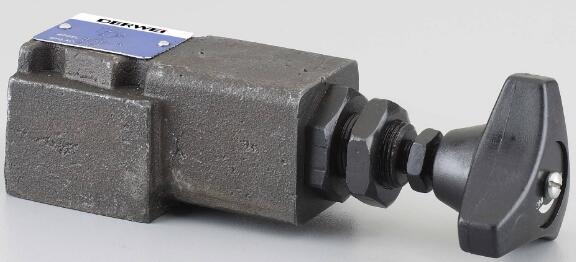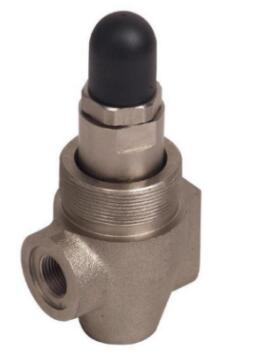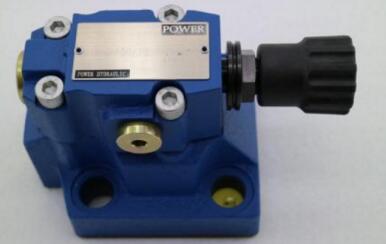The function and the classification of overflow
One of the features of the hydraulic drive is that it is easy to achieve overload protection. This means the overflow valve is active. It is through the opening of the valve port to keep the pressure of the system constant or limit the maximum pressure. The overflow valve can not only used as a safety valve, but also can be used as a pressure regulating valve, an unloading valve, a back pressure valve, a balancing valve, and so on. When used as a safety valve in the system, the overflow valve is normally closed, and it is only opened when the system is overloaded to limit the maximum pressure of the hydraulic system, to protect the hydraulic system or mechanical structure; in the throttle valve speed control system, The overflow valve is normally open, and it will be used as a pressure regulating valve or a constant pressure valve to keep the pressure of the system constant.

1. Constant pressure overflow: In the quantitative pump throttle regulation system, the fixed pump provides a constant flow. When the system pressure increases, the flow demand is reduced. At this point, the overflow valve opens, allowing excess flow to overflow back to the tank, ensuring the inlet pressure of the overflow valve, ie the pump outlet pressure is constant (the valve port often opens with pressure fluctuations).
2. Regulating effect: The overflow valve is connected in series on the oil returning road, the overflow valve generates back pressure, and the smoothness of the moving parts increases.
3. System unloading function: The solenoid valve of the small flow is connected in the remote control port of the overflow valve. When the electromagnet is energized, the remote control port of the overflow valve is connected to the fuel tank, and the hydraulic pump is unloaded. The overflow valve is now used as an unloading valve.
4. Safety protection: When the system is working normally, the valve is closed. Only when the load exceeds the specified limit (system pressure exceeds the set pressure), the overflow is turned on, and the overload protection is performed, so that the system pressure is no longer increased (usually the set pressure of the overflow valve is 10%~20% higher than the maximum working pressure of the system).
Classification of overflow valves:
1. Direct acting overflow valve:
(1)cone valve type direct acting type overflow valve;
(2)ball valve type direct acting type overflow valve;

2.pilot type relief valve:
It consists of two parts: the main valve and the pilot valve. The pilot valve is similar to a direct-acting relief valve, but is generally a poppet (or ball valve) seat-type structure. The main valve can be divided into a concentric structure, two concentric structures and three concentric structures.

Edited by Catherine Qin / EVP Vacuum Solution
(The article comes from the Internet. If reprinting is not allowed, please contact our company to delete it.)
